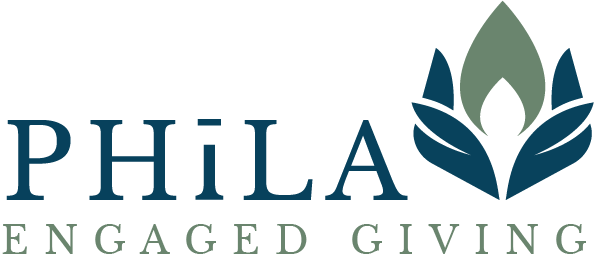By Janell Turner and Nancy Reid
The passing of the bipartisan Infrastructure Investment and Jobs Act (IIJA) last November signaled a commitment to repairing and reconstructing infrastructure consequential to the economic vitality of our nation after decades of neglect. The $1.2 trillion bill aims to improve public transit, reinforce bridges and tunnels, expand access to clean drinking water, and advance environmental justice. Importantly, a portion of the budget is allocated to help remedy decades-old infrastructure design and transportation policies that hindered economic growth in underserved communities.
In a recent public statement, Transportation Secretary Pete Buttigieg reported on the bill’s transportation budget that directs resources to special programs designed to address the racial inequalities in our nation’s transportation system and infrastructure. But with a budget of only $1 billion, these efforts are unlikely to go very far. What additional investments are needed to establish and strengthen the economic infrastructure required to bring communities of color fully up to par? And, as Taj James of Full Spectrum Capital Partners asked recently in a conversation about community investing, what forms of capital are our communities of color best able to absorb? And what forms of support can help maximize capital absorption?
While the infrastructure bill aims to amend the bricks and mortar needs of communities, Community Development Financial Institutions (CDFIs) offer an array of complementary investments into our communities’ social infrastructure. Certified by the U.S. Treasury, CDFIs are banks, credit unions, loan funds, and equity capital providers that use a combination of government and private sector capital to invest in low-income communities. Recipients of government CDFI funds have successfully leveraged billions in private sector investments to create jobs, build affordable housing, build essential community facilities, provide financial counseling, and invest in neighborhood revitalization initiatives.
The Community Reinvestment Act of 1977 initially gave rise to CDFIs by requiring banks to reinvest in communities that were stripped of access to capital through redlining. Almost half a century later, there are hundreds of CDFIs in the United States, ranging widely in size and operations. They include loan funds, venture funds, regulated depositories, and community development credit unions. In the summer of 2020 in response to Black Lives Matter protests, the treasurers of a handful of large U.S. corporations began to take notice of CDFIs as both an investment vehicle and as a way to invest in communities.
Donors who direct philanthropic capital into communities of color have begun to ask themselves what other tools may be available to support economic development. Increasingly, access to capital – affordable loans to consumers and business owners of color – has come into focus as a critical pathway to wealth creation. CDFIs can offer underwriting, diversification, and support for borrowers alongside tailored resources and innovative programs to foster economic opportunity and revitalize neighborhoods.
While the opportunity to directly support community wealth building is attractive, donors should consider the following:
CDFIs can deploy both philanthropic and investment capital. An increasing number of CDFIs offer investment notes, which aim to return 100% of the funders’ capital with a modest, below-market rate of financial return. Placing loans in underestimated communities requires care and support, which must be funded through grant support. Funders can back either of these activities, or use blended capital approaches to do both. For more information on this investment approach, Capital Impact Partners is the largest minority-led CDFI in the country; their investment note is rated by Standard & Poor’s and investments can be supported with philanthropic capital as well.
CDFIs vary broadly in their size and risk. While many CDFIs fared better than banks in the great recession, funders should understand that any loan, or pool of loans, bears risk. While Standard & Poor’s began issuing ratings to some of the larger CDFIs in 2015, a nonprofit ratings agency called Aeris has gathered data on CDFIs since 2004 and issues ratings on over 150 CDFIs around the country to help investors and donors understand their financial exposure and impact.
CDFIs can offer targeted impact. Changemakers focused on a particular geography, issue area, risk profile, or population can direct loans through existing organizations that have, in some cases, been building relationships in communities for many years. Aeris has built a helpful tool called the CDFI Locator. Investors focused on a particular U.N. Sustainable Development Goal can sort by the SDGs also.
The financial services sector is innovating fast. Several financial technology (fintech) and investment advisory firms are working to provide their clients with vehicles to access CDFIs. If your advisor hasn’t yet introduced CDFIs as an option for capital that doesn’t require the highest financial return possible, ask them! This type of investing sits at the intersection of return-seeking investment approaches and impact-seeking philanthropy. It may only be a matter of time before it becomes a mainstream option for donors.
Donors may direct assets from a Donor Advised fund to a CDFI. Some DAF platforms will allow grantors to direct DAF assets into pooled loan vehicles like CDFIs. Ask your DAF provider what options may be available to you.
The first step when considering any new philanthropic strategy is to clarify your intentions. What outcomes are most important to you? Do you envision building affordable housing? Creating jobs? Helping small businesses get started? Think about what you’d like to achieve in your philanthropy and then seek out a CDFI that aligns with your giving strategy. If you’re just getting started and would like support in developing a giving strategy, Phīla Engaged Giving is here to help.
Lastly, while supporting CDFIs can be a compelling complement to your philanthropic framework through grants and program-related investments, talk to your financial advisor before incorporating CDFIs into your personal investment strategy. To learn more about CDFIs check out CDFI Investing for the Impact Investor published by Community Capital Management and A Foundation Guide to Investing in CDFIs published by Philanthropy Northwest.
*The statements and ideas presented in this blog post do not constitute financial advice or an endorsement of a particular financial instrument.




